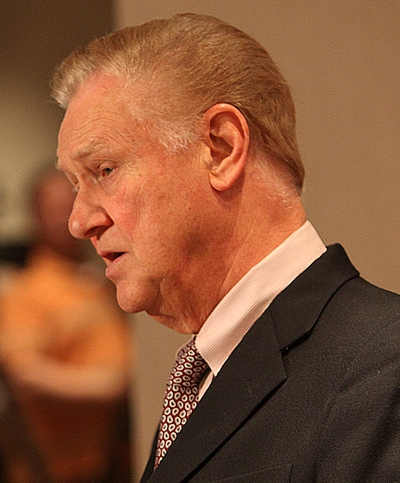Tuesday, Jan. 26, 2010 | 2 a.m.
Two years of steep budget cuts have left the salaries of Clark County School District teachers untouched. But the latest numbers from Carson City might bring that to an end.
On Friday, the Economic Forum predicted that Nevada’s major tax revenue would fall $600 million below projections. The deficit swells to more than $800 million when guaranteed support for public schools is included.
With personnel costs accounting for nearly 90 percent of the district’s $2.1 billion budget, Clark County Schools Superintendent Walt Rulffes said the next cuts would almost certainly come from employees’ paychecks.
The district will be back at the negotiating table with teachers, administrators and support employees this summer.
“We’re at the point now where we’re faced with either pink slips or, preferably, small sacrifices by everyone,” Rulffes said. “There’s no ifs, ands or buts about it.”
Rulffes said he’s considering several proposals to deal with the cuts, including reducing the number of workdays.
Another option would be a short-term pay cut. (In October, Rulffes announced he would be taking a voluntary 10 percent pay cut, reducing his $307,000 annual salary by $30,700.)
State workers, including some higher education faculty and staff, have taken pay cuts of 4.6 percent through mandatory furloughs. And there is a growing sense of frustration among some state lawmakers — many of whom are Republicans — that teachers haven’t shared in the suffering. Last year, the School District said its bargaining agreement with the teachers left no option but to honor a 4 percent pay raise. And this year teachers received their negotiated step increases.
This month Gov. Jim Gibbons suggested that collective bargaining for public employees, including teachers, be abandoned as too costly.
But Ruben Murillo, president of the Clark County Education Association, said it’s too soon to discuss what the teachers union, which represents the majority of the district’s 18,000 licensed personnel, might be willing to consider during contract negotiations.
But he called those who want to cut teacher pay shortsighted and unfair.
“All I’m saying is it would be very difficult to accept any kind of salary reduction based on the abysmal history of teacher pay,” Murillo said. “We will be working with the district to look at ways to reduce budget with minimal impact on classroom and student instruction. That’s our goal.”
Murillo added that it’s not collective bargaining or teachers who are to blame for the budget troubles.
“The governor, in good times, didn’t want to do what he had to do to make sure Nevada’s tax structure was sound, and that the state’s future would be secure in the down times,” Murillo said. “To unfairly single out teachers as a cause of the deficit, and for him to say eliminating collective bargaining will save the day, is ridiculous.”
In the two years since Nevada’s economy plummeted, the Clark County School District, the single largest recipient of state tax dollars, has eliminated $250 million in student programs, campus services and staff positions.
As a result, some class sizes are larger. There’s less help for struggling students. Teachers are buying more of their own supplies. Sports teams are playing fewer games, while field trips and travel for out-of-town music competitions has been scaled back or canceled. Routine maintenance and repairs are being delayed, increasing the risk of a small fix swelling into an expensive problem.
The 2009 Legislature reduced K-12 funding for the biennium by the equivalent of a 4.6 percent reduction in teacher pay. But because teacher salaries are locked in by negotiated contract — and beyond the reach of lawmakers — it was left it up to each district to decide how to balance the bottom line. Rulffes opted to take the money out of programs and services, while teacher salaries were maintained.
Teachers also escaped layoffs this summer, even as hundreds of support employees were put out of work. Rulffes said without an injection of $82 million in federal stimulus money, another 1,100 of the district’s more than 38,000 employees would have been laid off.
Next year, public schools will benefit from a 3 percent increase in the hotel room tax rate, which was approved by the 2009 Legislature. For the first two years of the tax increase, the new revenue goes to the state’s general fund. In 2011 it will be earmarked for teacher salaries and education.
If the union agreed to a temporary reduction in teacher salaries, the pay scale could be restored by the new tax revenue, Rulffes said.
“I hope the unions will come to the table with a cooperative spirit,” Rulffes said. “This is when we really need it.”


Join the Discussion:
Check this out for a full explanation of our conversion to the LiveFyre commenting system and instructions on how to sign up for an account.
Full comments policy